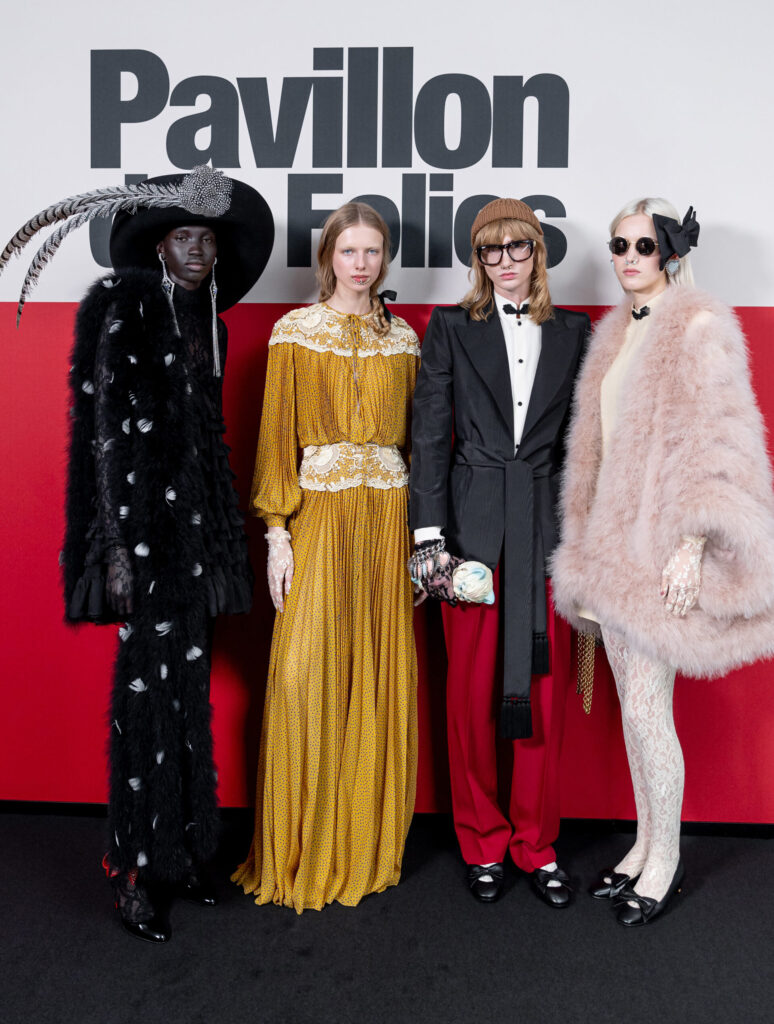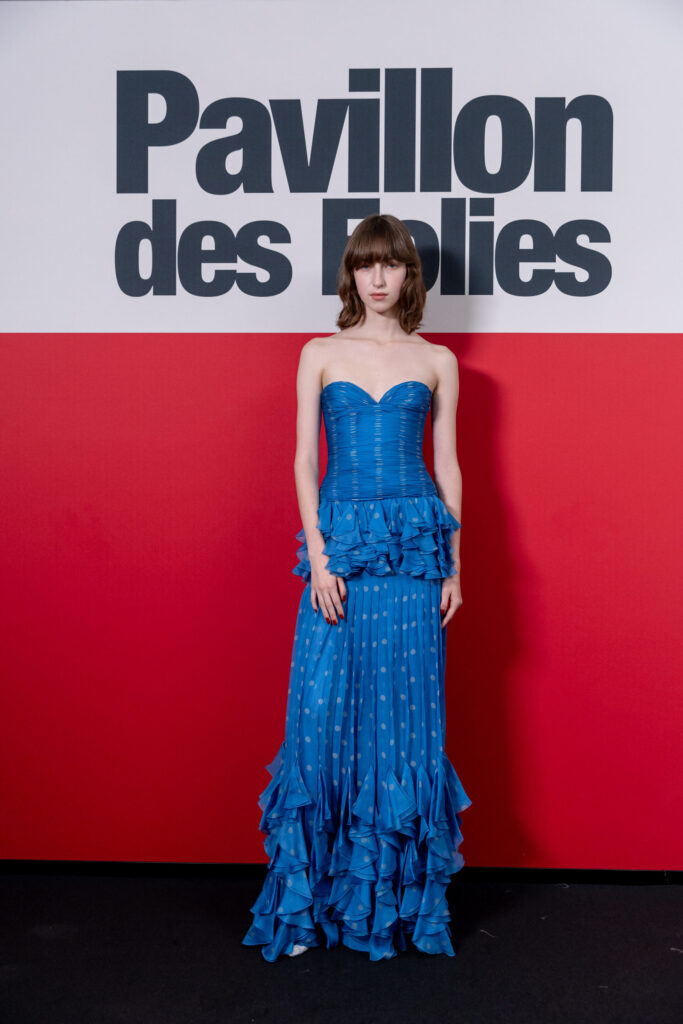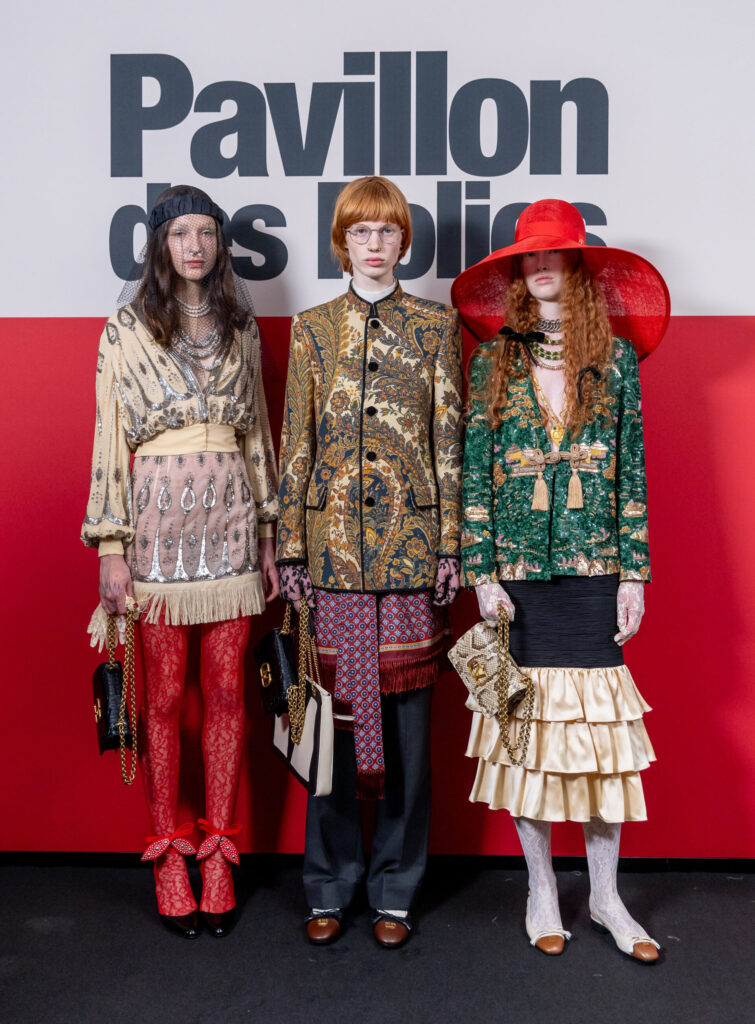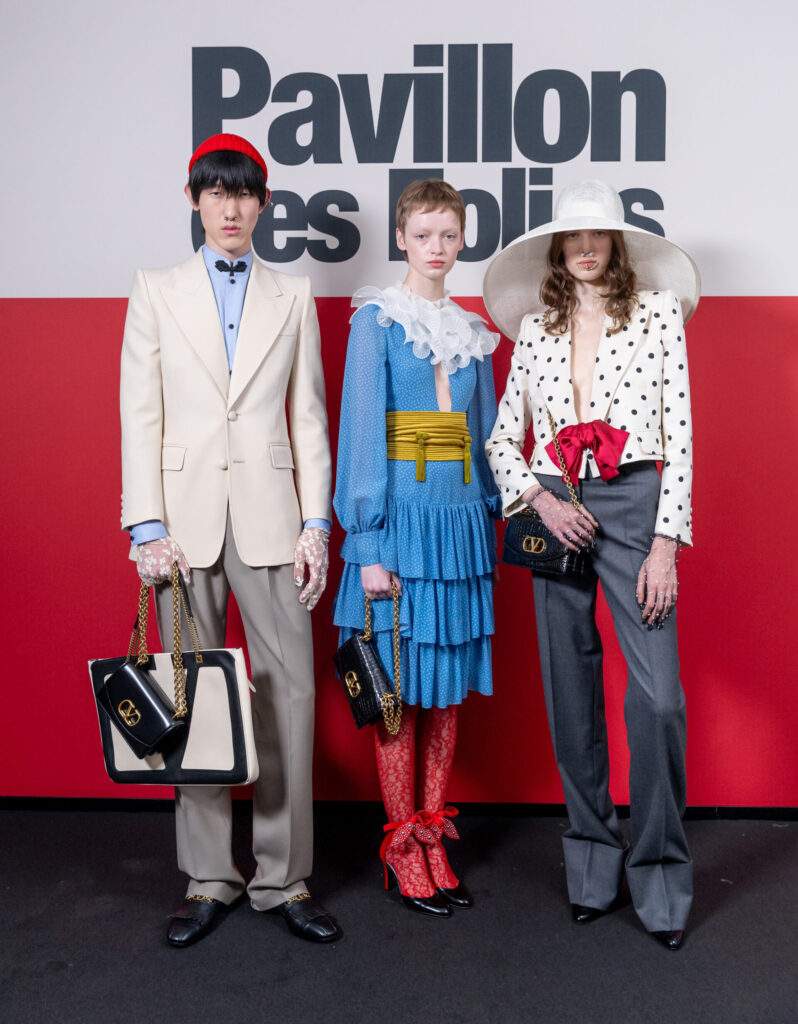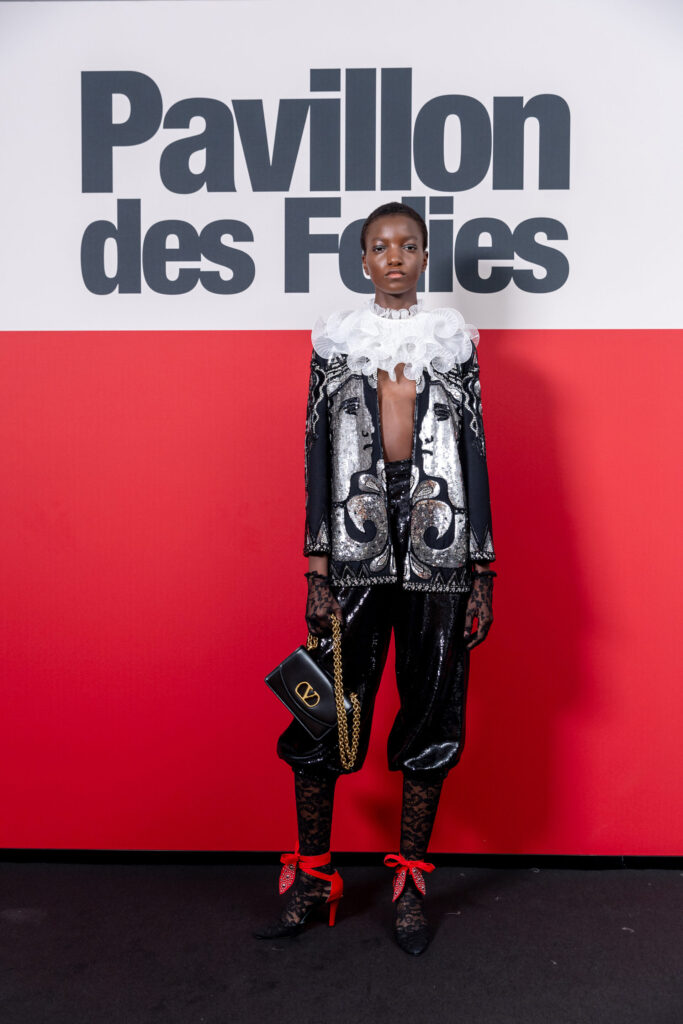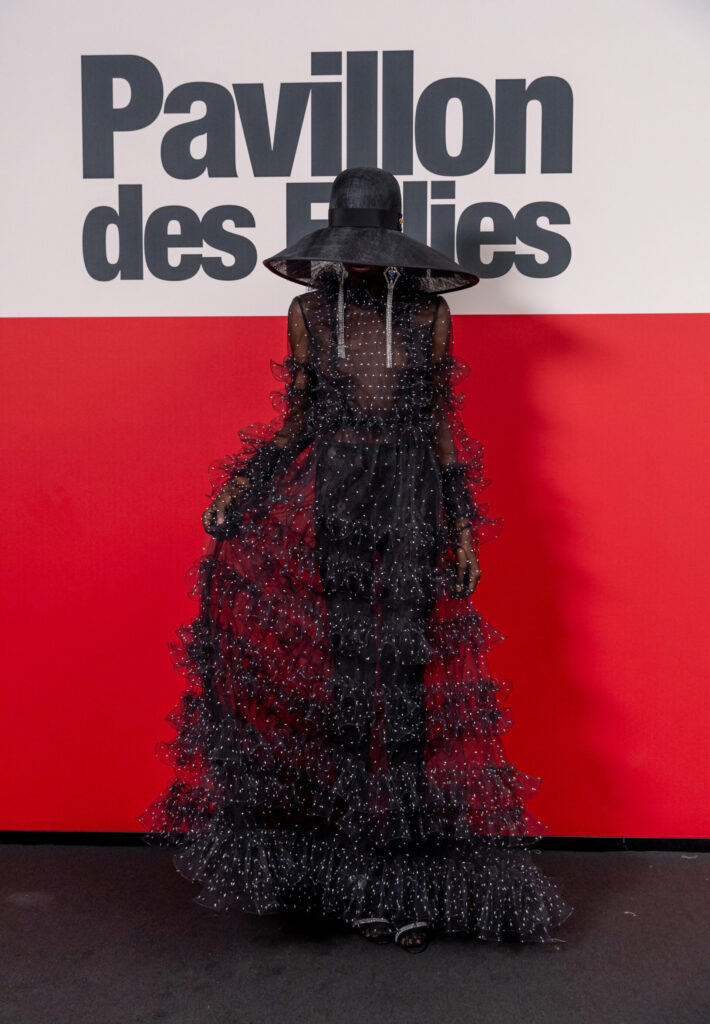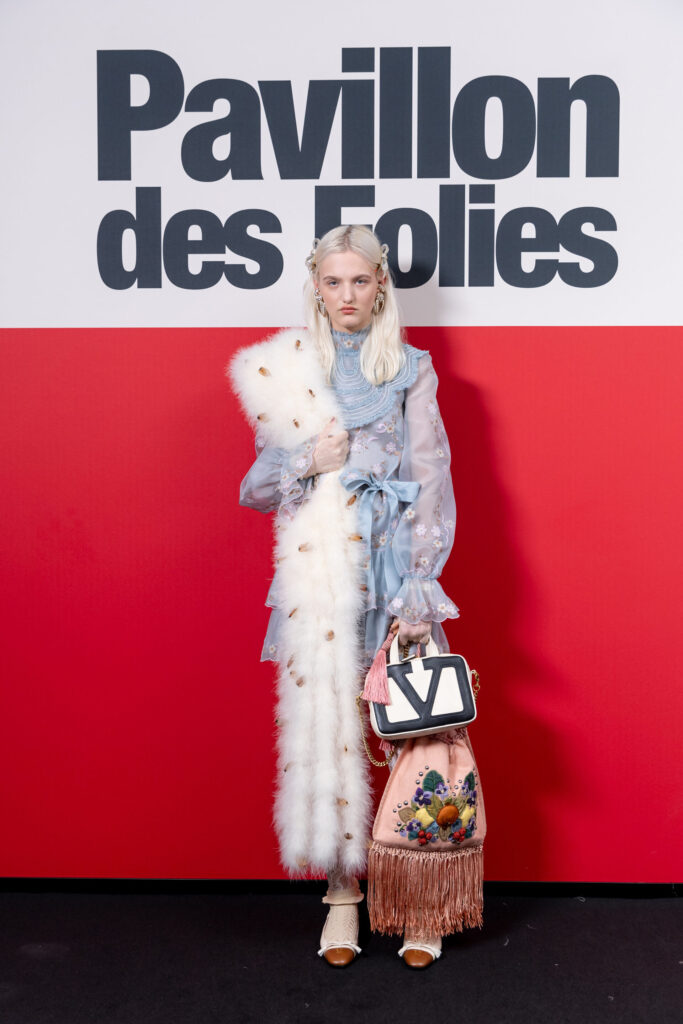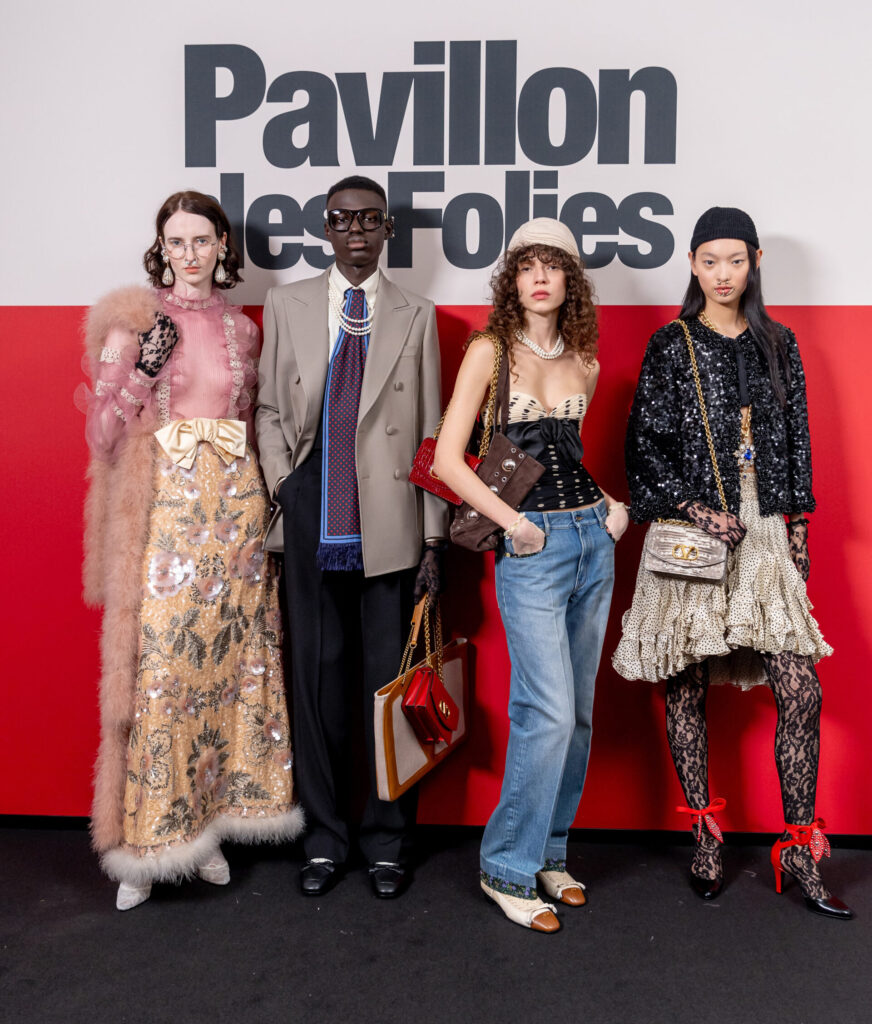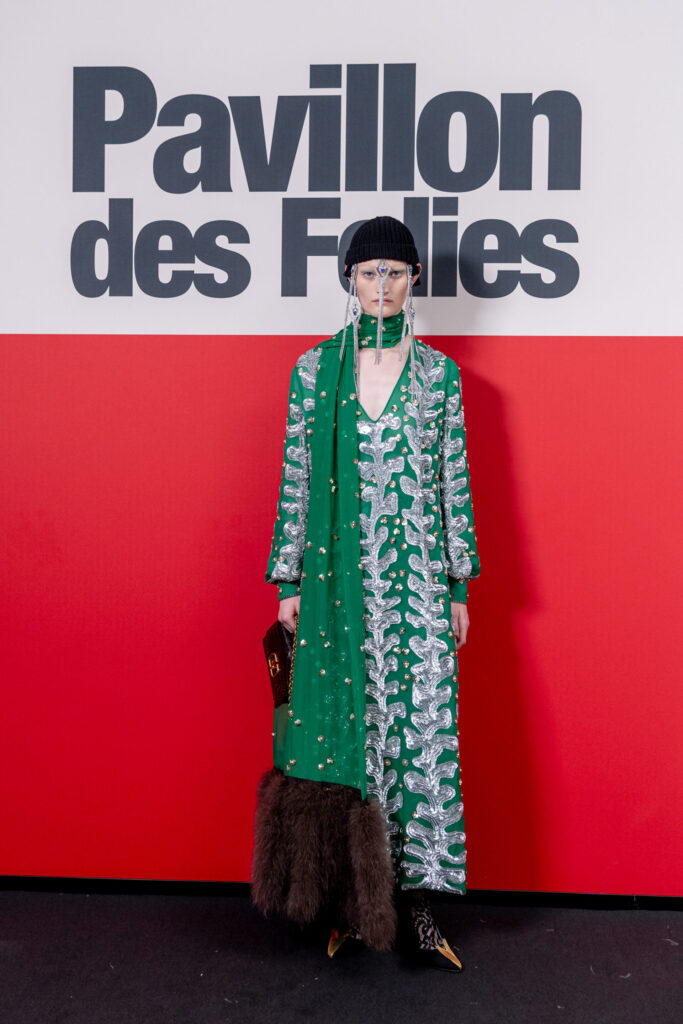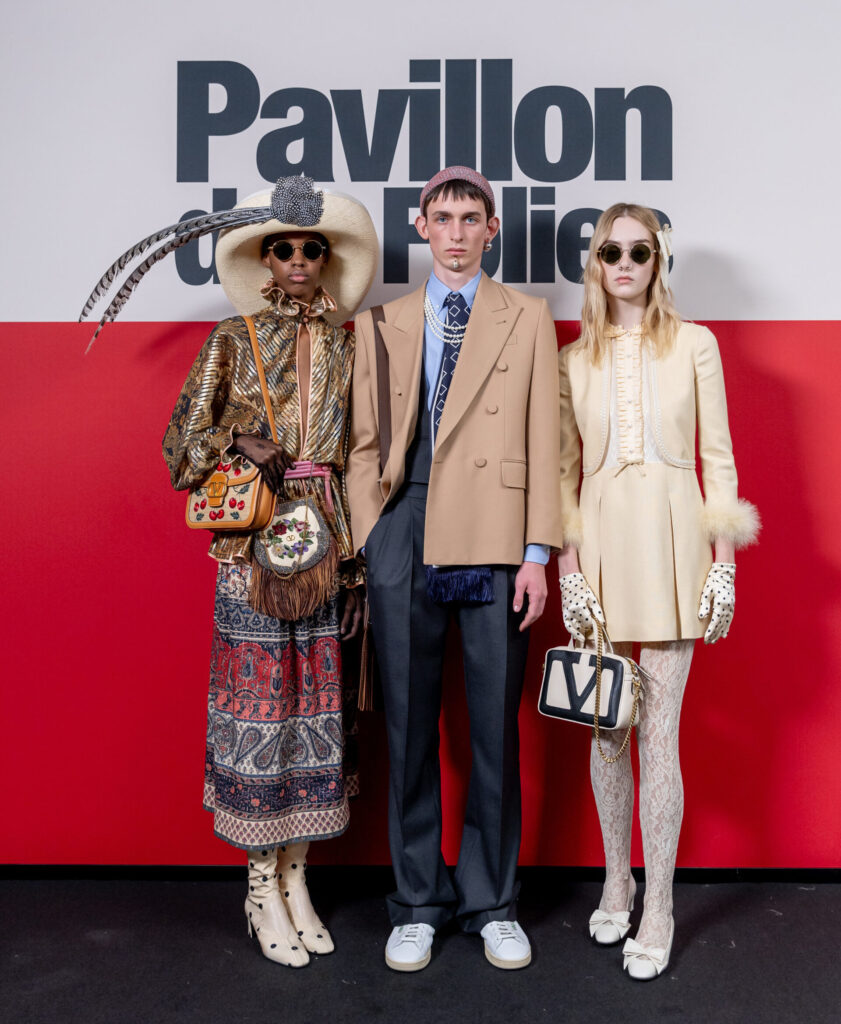Alessandro Michele Brings Innocence and Play to Valentino

Alessandro Michele’s first collection for Valentino was keenly anticipated and worth the wait. The former creative director of Gucci brought his maximalist sensibility to his new home in a collection that foregrounded spontaneity and surprise. It was a show that thought deeply about the history of Valentino’s garments as well as the purpose of art itself. If these seem like weighty ambitions, they did nothing to mar a sense of frivolity and pleasure. Indeed, frivolity was presented as a sort of answer.
Michele’s philosophical approach was signalled early in accompanying materials. The show notes draw on existentialist themes, reflecting on the finitude and ultimate absurdity of existence. In his brief essay, dotted with literary references, the designer presents beauty as first a comfort and then ultimately a raison d’etre. If life moves unerringly towards waste, beauty interrupts such entropy with an assertion of vitality, an escape. “When we build beauty, or we spot it in the undifferentiated and chaotic flow of our existences, it feels like being raptured [...] can tear us away from senselessness.” Here, beauty answers death with its own set of values, free from the dull logic of utility and purpose.
These dualities are reflected throughout Pavillon Des Follies, which blends elements of melancholy with joyful release. The show was staged on a cracked mirror floor, suggesting time eroding even our most durable vanities. Throughout, ambiguous objects were draped in white sheets, a visual evocation of Halisham’s attic or broader themes of regret and pleasures past. If the staging established a metaphor for decline, the clothes offered a raucous embrace of colour, life and play.
Michele drew deeply from Valentino’s archives, an effort reflected most conspicuously in his embrace of polka dots, which appeared across the looks. Yet these allusions were smashed together in delirious combinations—polka dots gave way to paisley, to floral prints, to dresses as sheer as lingerie. The collection toured eras, referencing 1930s couture, Art Deco, and hovering on visions of 1960s/1970s bohemianism (an aesthetic for which Michele has previously shown a great affinity).
Cumulatively, the effect was both extravagant and oddly innocent. The dazzling combinations and sudden shifts signalled an insouciant rejection of rigid consistency or tasteful restraint. This should be fun, he seemed to suggest. The heaviness of the moment, of life itself, can only be met with a strident declaration of levity.
Such impressions were reinforced by the oversized silhouettes. The opening looks in particular were marked by an abundance of fabric: floor length gowns, rippling bishop sleeves, ruffled hems arranged in intricate tiers, frilly collars. The lavish, flowing materials seemed to confer a sort of innocence on the models. It made them seem smaller, like children who had been let loose upon the surrounding attic, caught in a game of dress-up, drawn to the biggest, loudest pieces. Perhaps they stood as a proxy for Michele’s own delight, trawling the Valentino archives. Perhaps too they signal a direction for the audience, prompting us to reengage with those early aesthetic encounters, the joy and silliness of it all.
The accessories were similarly diverse: turbans alongside knitted beanies; contemporary facial jewellery, alongside playfully nostalgic crocheted socks. Gradually, the eclecticism gave way to a paradoxical coherence, Michele's advocacy for a broader vision of fashion as an improvised game.
The show progressed. Soon, the draped props began to glow, the cracked glass remained as eerie beneath, and vocals sang “joy we must find, joy we must find” over a moody string arrangement. This injunction, repeated again and again, hinted at a sense of life’s limits as well as a tenuous hope. 'While haunted by the inevitability of loss, we can still find scope for meaning', they seemed to suggest. Indeed, these limits can even offer urgency to our pursuits. We should then choose innocence; choose play.
Valentino by Alessandro Michele Spring Summer 2025
FKA twigs Joins On as Creative Partner for New Training Vertical
By Olivia Dougas
At Miu Miu, Salt Looks Like Sugar
By Deana Stepanian
Hedi Slimane Pens the Final Chapter of His Celine Era
By Sean Gilbert
Max Mara Puts Mathematics Into Motion
By Alexia Petsinis
Never Coming to a Department Store Near You – Hirshleifer’s OCD 27
By T.
G.I.S.M., Jun Takahashi and Undercover: The Love Affair
By T.

